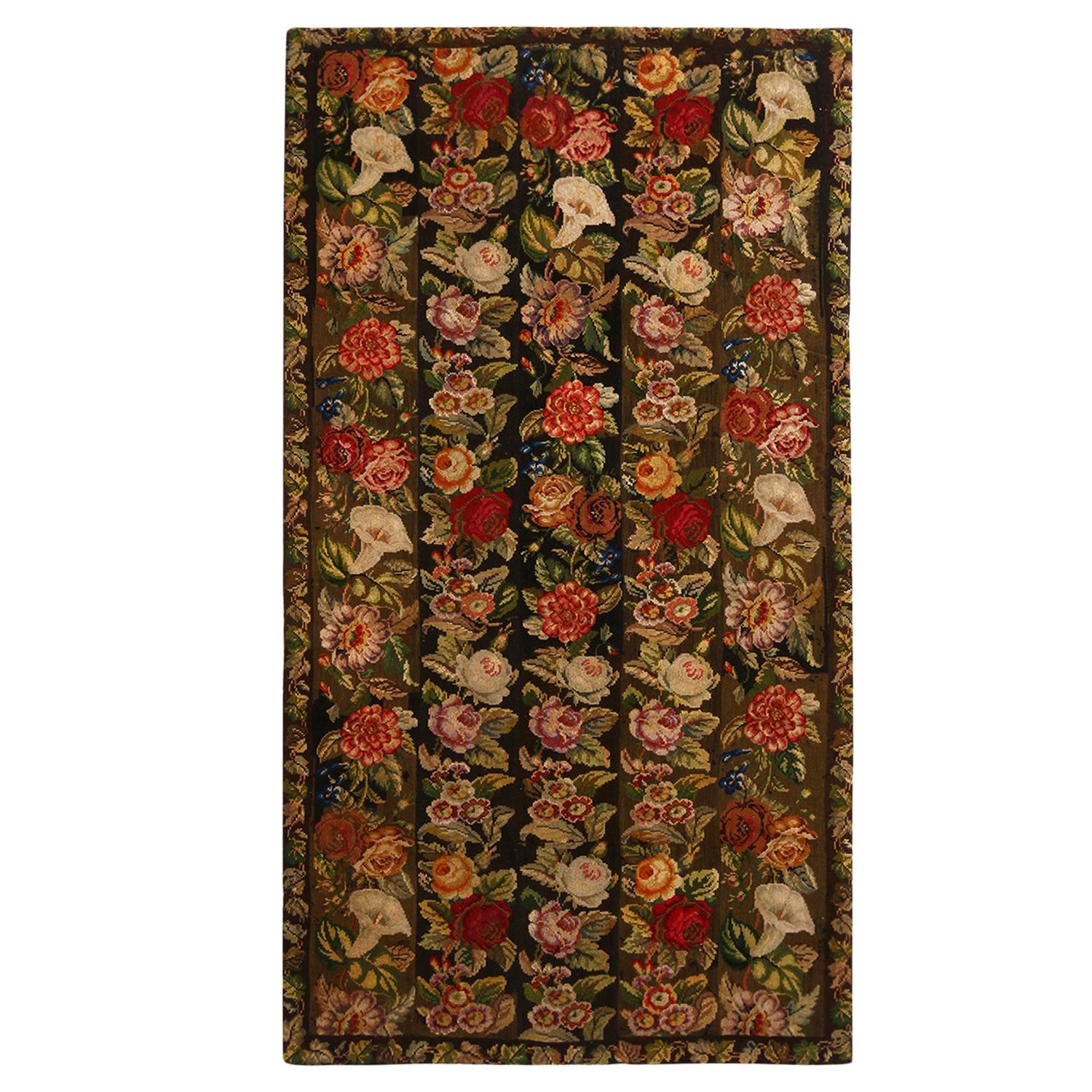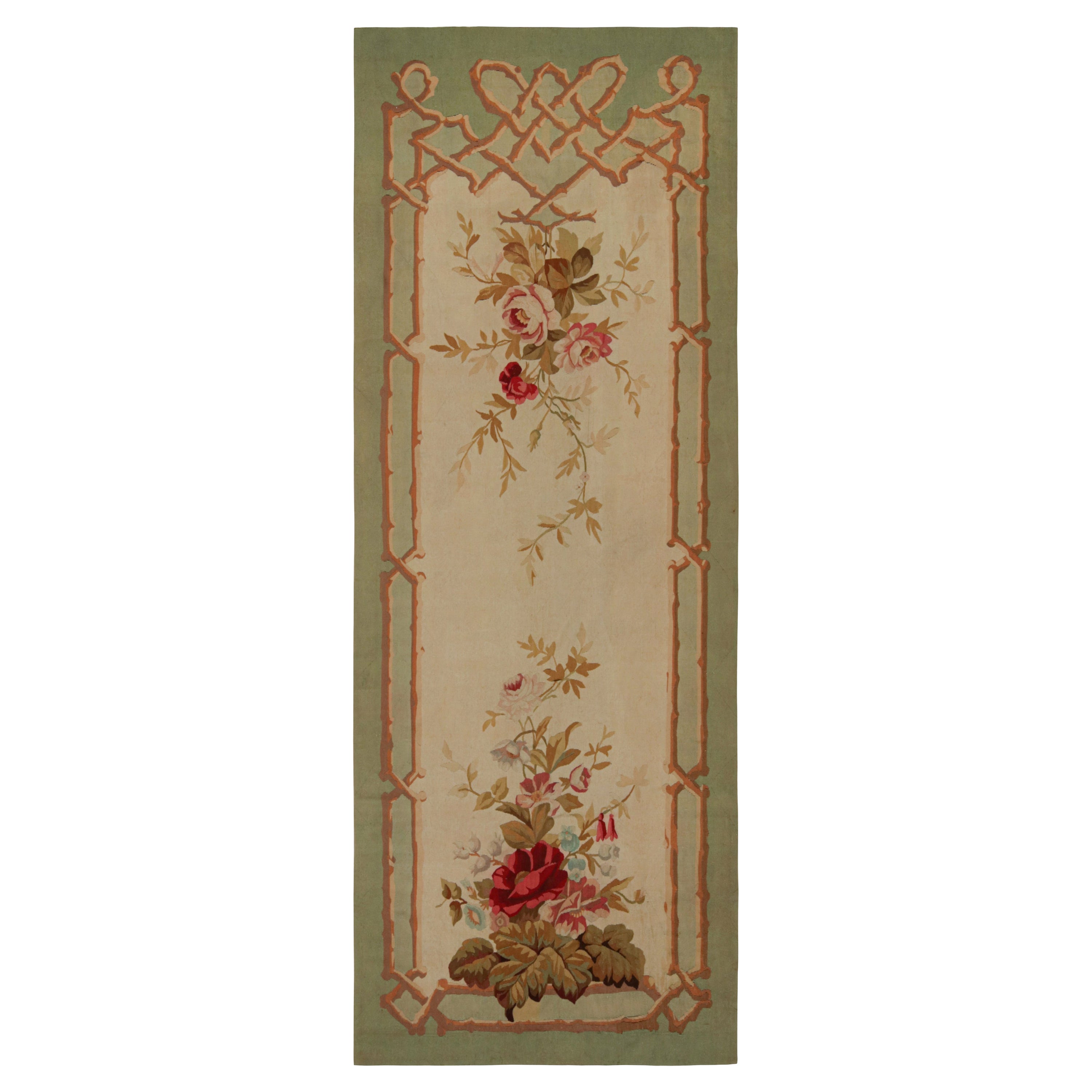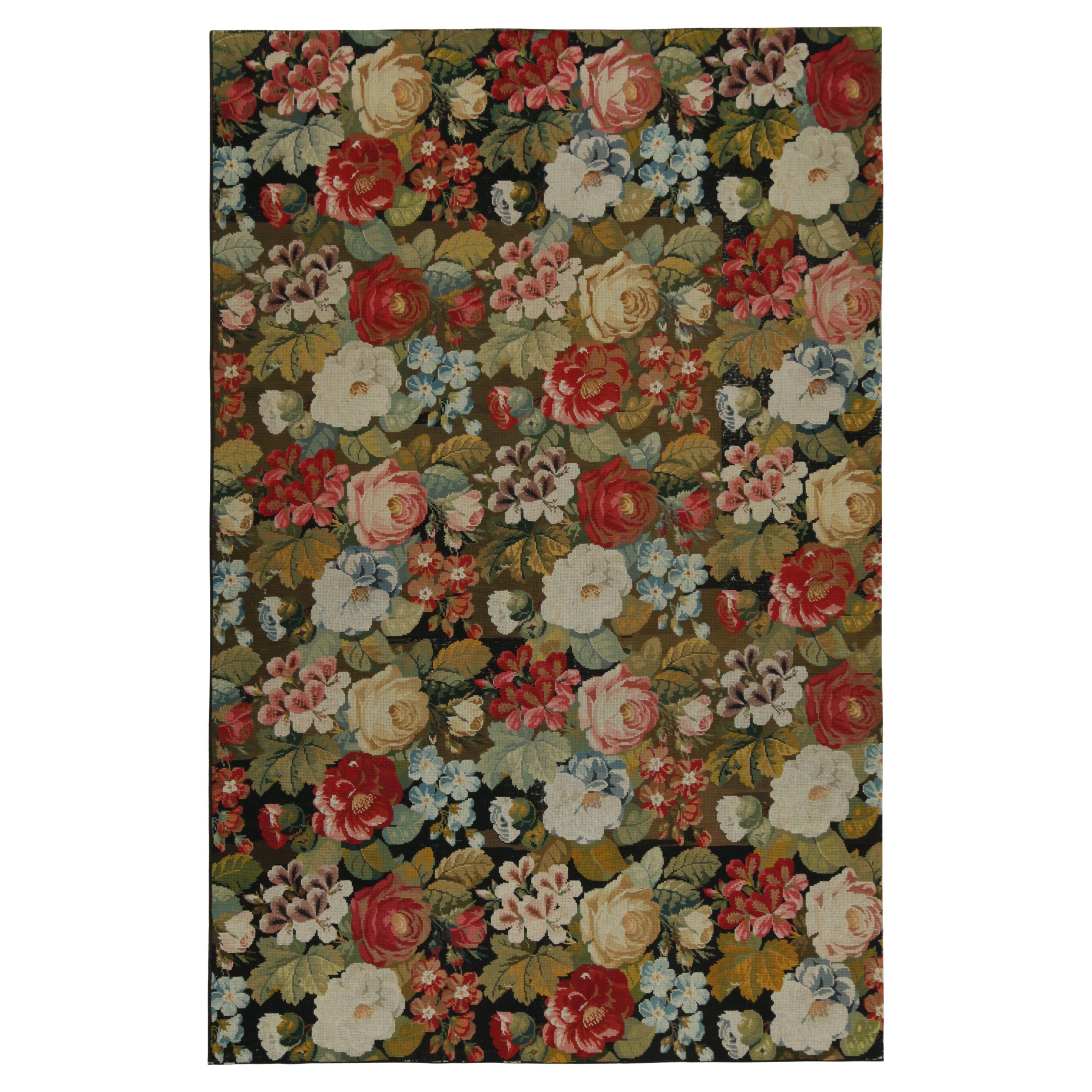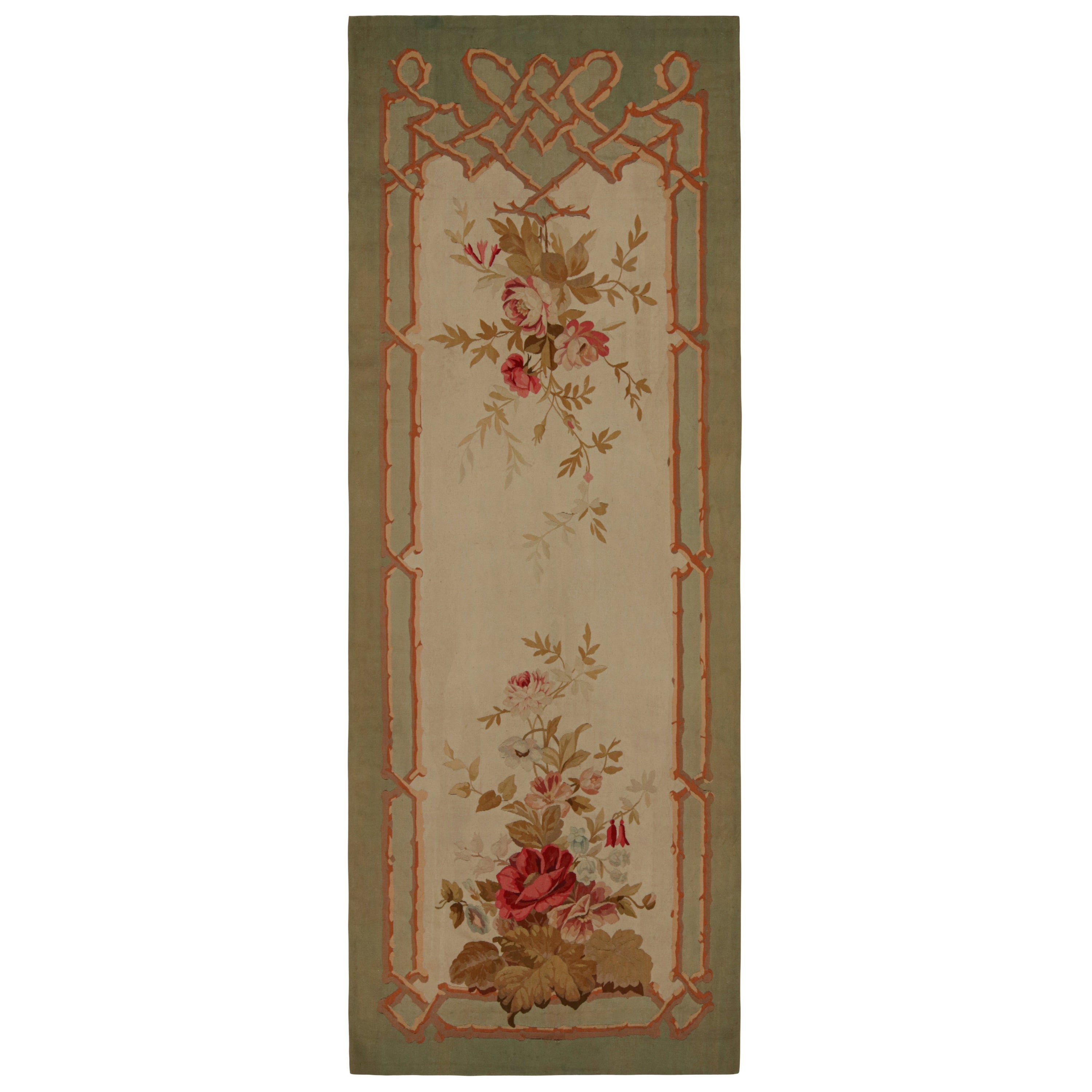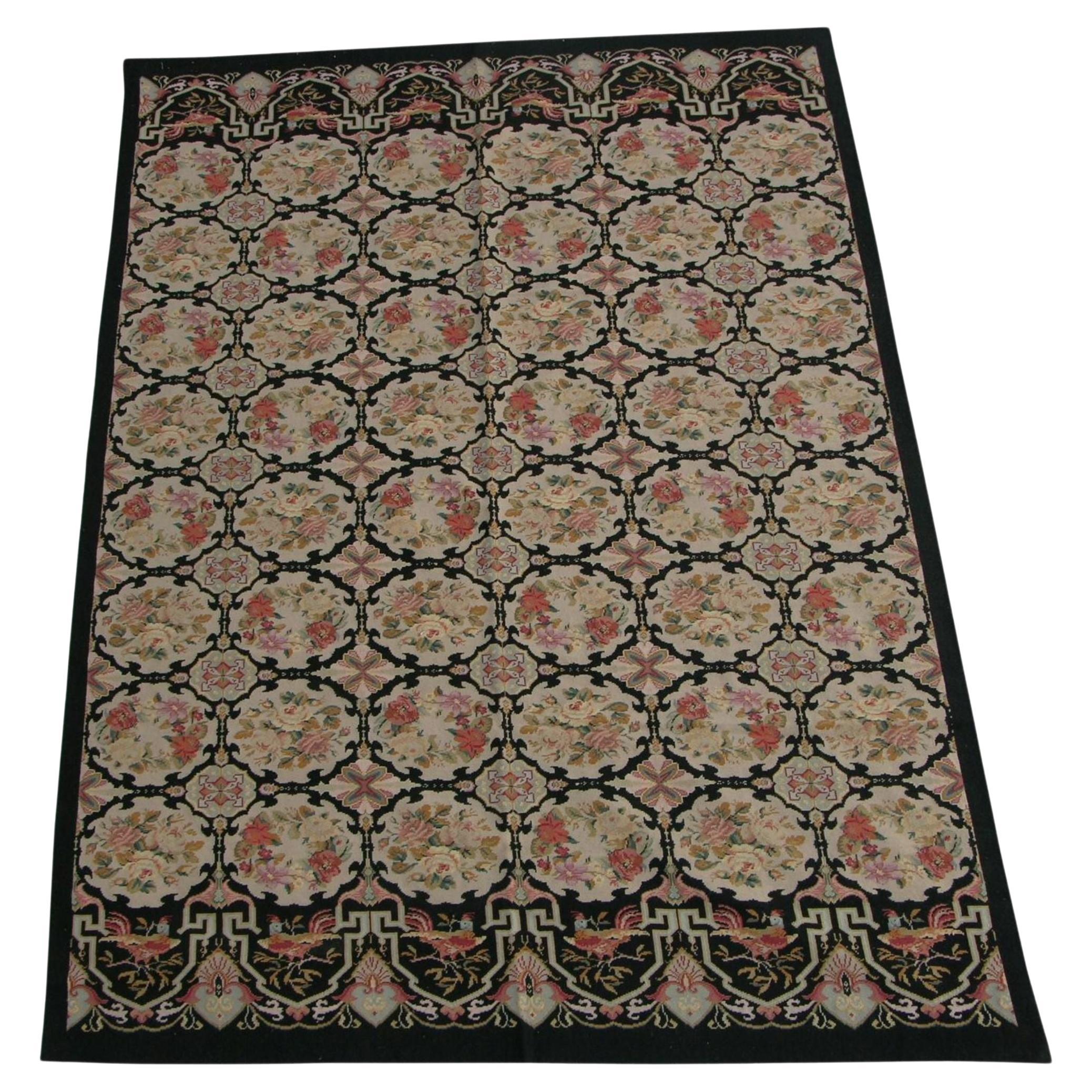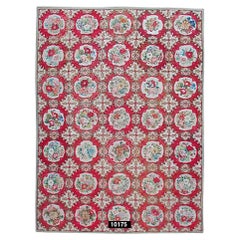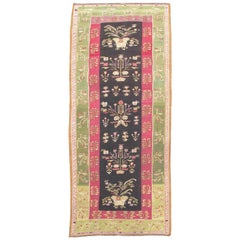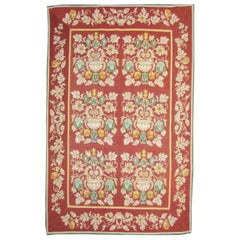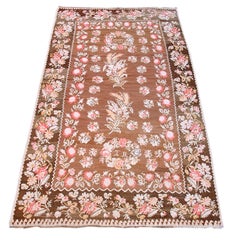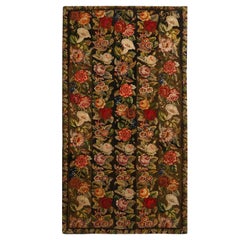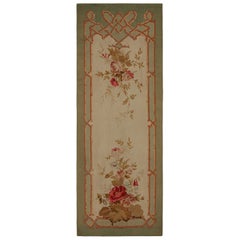Items Similar to Green Floral European Needlepoint Rug, Mid-20th Century
Want more images or videos?
Request additional images or videos from the seller
1 of 6
Green Floral European Needlepoint Rug, Mid-20th Century
$2,500
£1,908.74
€2,205.53
CA$3,509.53
A$3,911.73
CHF 2,052.35
MX$47,768.64
NOK 25,987.24
SEK 24,561.90
DKK 16,460.84
About the Item
Green Floral European Needlepoint Rug, Mid-20th Century
Additional Information:
Dimensions: 6'1" L x 4'0" W
Condition: Excellent
Origin: Europe
Period: Mid-20th Century
Rug ID: 17273
- Dimensions:Width: 48 in (121.92 cm)Length: 73 in (185.42 cm)
- Materials and Techniques:Wool,Hand-Knotted
- Place of Origin:
- Period:
- Date of Manufacture:Mid-20th Century
- Condition:
- Seller Location:San Francisco, CA
- Reference Number:Seller: 172731stDibs: LU855533616932
About the Seller
4.7
Recognized Seller
These prestigious sellers are industry leaders and represent the highest echelon for item quality and design.
Established in 1976
1stDibs seller since 2008
37 sales on 1stDibs
Typical response time: 12 hours
Associations
The Art and Antique Dealers League of AmericaAntiques Associations Members
- ShippingRetrieving quote...Shipping from: San Francisco, CA
- Return Policy
Authenticity Guarantee
In the unlikely event there’s an issue with an item’s authenticity, contact us within 1 year for a full refund. DetailsMoney-Back Guarantee
If your item is not as described, is damaged in transit, or does not arrive, contact us within 7 days for a full refund. Details24-Hour Cancellation
You have a 24-hour grace period in which to reconsider your purchase, with no questions asked.Vetted Professional Sellers
Our world-class sellers must adhere to strict standards for service and quality, maintaining the integrity of our listings.Price-Match Guarantee
If you find that a seller listed the same item for a lower price elsewhere, we’ll match it.Trusted Global Delivery
Our best-in-class carrier network provides specialized shipping options worldwide, including custom delivery.More From This Seller
View AllFloral English Needlepoint Rug, 19th Century
Located in San Francisco, CA
Floral Decorative English Needlepoint Rug, 19th Century (4th Quarter)
Additional Information:
Dimensions: 7'9" W x 11'1" L
Origin: England
Period: 19th Century (4th Quarter)
Rug ID:...
Category
Antique 19th Century English Western European Rugs
Materials
Wool
Outstanding Floral Bessarabian Kilim with Light Green Border, 19th Century
Located in San Francisco, CA
Outstanding Floral Bessarabian Kilim with Light Green Border, Mid-19th Century
Pile carpets and flat-weaves known in the market as 'Bessarabian' were woven mostly in the 19th century in what are now the countries of Romania, Moldova, and Ukraine—along the northwestern coastal areas of the Black Sea (in eastern Europe). Both pile and Kilim types use floral subject matter and a distinct coloration, with a dominant dark ground and accents in rose reds. This older Bessarabian flat-weave uses a red derived from imported cochineal and adds a pleasing complimentary contrasting light green border, a feature lost in later examples. Planted flower pots...
Category
Antique Mid-19th Century Moldovan Russian and Scandinavian Rugs
Materials
Wool
Handwoven European Needlepoint Rug, Mid-20th Century
Located in San Francisco, CA
European Needlepoint Rug, Mid-20th Century
Additional Information:
Dimensions: 6'2" L x 4'6" W
Condition: Excellent
Origin: Europe
Period: Mid-20th Century
Rug ID: 17274
Category
Mid-20th Century European Western European Rugs
Materials
Wool, Cotton
Floral Bessarabian Kilim, c. 1919
Located in San Francisco, CA
Floral Bessarabian Kilim, c. 1919
A fascinating decorative flat-weave Kilim in shades of brown, apricot, ivory, grey and gold. Note the prominent woven in date of 1919 in the upper ...
Category
Early 20th Century Ukrainian Western European Rugs
Materials
Wool
Floral Bessarabian Kilim, Mid-20th Century
Located in San Francisco, CA
Floral Bessarabian Kilim, Mid 20th Century
Additional Information:
Dimensions: 7'1" W x 12'0" L
Origin: Moldova
Period: Mid-20th Century
Rug ID: 21901
Category
Mid-20th Century Moldovan More Carpets
Materials
Wool
Rustic Floral Ukrainian Rug
Located in San Francisco, CA
Probably woven in western Ukraine based on French prototypes, this piece combines a classic European look with just a hint of rustic comfort. The wool quality is exceptionally soft a...
Category
20th Century Ukrainian Russian and Scandinavian Rugs
Materials
Wool
You May Also Like
Antique Needlepoint Green Multi-Color Wool Floral Rug by Rug & Kilim
Located in Long Island City, NY
Hand stitched in high-quality wool originating from England in 1910, this antique needlepoint floral rug enjoys exceptionally fine detail and a...
Category
Vintage 1910s English Western European Rugs
Materials
Wool
Antique Floral Aubusson Tapestry Runner Rug in Cream & Green, from Rug & Kilim
Located in Long Island City, NY
This 4x11 antique Aubusson tapestry runner rug is one of a rare set of twin flatweaves from turn-of-the-century France. Both handwoven in wool circa 1890-1900, their design features ...
Category
Antique 1890s French Aubusson Western European Rugs
Materials
Wool
Antique Needlepoint Rug in with Red and Green Floral Patterns, by Rug & Kilim
Located in Long Island City, NY
This antique 6x10 needlepoint rug is a rare late 19th century addition to Rug & Kilim’s classic curations. Handwoven in wool from England circa 1890-1900.
Further on the Design:
...
Category
Antique 1890s English Western European Rugs
Materials
Wool
Antique Floral Aubusson Tapestry Runner Rug in Cream & Green, from Rug & Kilim
Located in Long Island City, NY
This 4x11 antique Aubusson tapestry runner rug is one of a rare set of twin flatweaves from turn-of-the-century France. Both handwoven in wool circa 1890-1900, their design features ...
Category
Antique 1890s French Aubusson Western European Rugs
Materials
Wool
1950s Vintage Floral Design Needlepoint Rug
Located in Los Angeles, US
Ancient Roots Of Needlepoint Rugs
Archaeologists and scholars consider the roots of needlepoint to have been around 1500 BC. They consider the first needlepoint to include the fine diagonal stitches that were used to sew tents together by the ancient Egyptians. The art eventually evolved into tapestry weaving. However, a tapestry weaving differs significantly from needlepoint in that it uses a loom and vertical warp.
Tapestry weaving is closer to the weaving of kilims and pile rugs than canvas work. However, some still include tapestry weaving in the category of needlepoint because of the fine work that appeared during the late Renaissance. It can have a similar appearance to the untrained eye. Technically, tapestry weaving and needlepoint are not the same, and they do not use the same technique.
The first actual needlepoint rugs and needle-points began to appear in the late Renaissance. Needlepoint is worked by creating stitches on a stiff canvas. The canvas is typically made from jute or linen and is quite durable. Pieces from the Renaissance were used to cover footstools, chairs, pillows, bed headboards, and other furnishings. They were also used as table coverings and wall coverings. You could also find them on many small items such as purses, shoes, and various adornments for clothing.
During the Renaissance, the craft reached a high level of skill, and the designs became incredibly detailed and realistic. They mimicked many of the subjects and styles of famous paintings of the time. They created florals, still life designs, scenes, and geometric tiled pieces. Some of them mimicked the designs found in Persian Carpets.
Needlepoint reached its peak popularity in the 19th century when it was considered a proper occupation for a lady. Needlepoint and embroidery held a similar place in societal status at the time. During this time, the work became finer, with some of the canvas reaching a high level of detail. The level of detail is determined by counting the number of mesh in an inch. During this time petit point by French needlewomen could have a mesh count as high as 45 mesh. This allowed women to create highly intricate designs with incredible levels of detail.
Historical Needlepoint Carpets and Rugs
It is possible to find many antique pieces of needlepoint besides rugs. Needlepoint rugs were popular in France and Spain, where the technique was adapted to create highly intricate designs that mimicked the designs in architecture and fashion. They were popular because they were durable, and it could be fashioned into a variety of items. The canvases themselves were durable, and the wool that they used was also strong, which means that many of the pieces were able to withstand daily use. We have many artifacts that have survived from this time period.
Needlepoint rugs are important collectibles because they are different from the pile rugs and kilims that are typically found on the market. Needlepoint carpets are special because they take many hours to create, especially larger works. Needlepoint pieces of any type became popular throughout Europe during the 19th century. It is still a popular hobby today, but perhaps one of the most interesting stories is that of the Portuguese needlewomen of Arraiolos.
The story of these women and their beautiful carpets begins in 1492. Needlepoint was a popular occupation in Spain, which had a large population of Moors and Jews. They were an integral part of Spanish culture. However, in 1492, Queen Isabella of Spain issued a proclamation that gave these ethnic groups the order to pack their bags and board ships headed...
Category
Vintage 1950s Other Russian and Scandinavian Rugs
Materials
Wool
Antique Leleu French Art Deco Rug in Green with Floral Patterns - Rug & Kilim
Located in Long Island City, NY
Made with hand-knotted wool in France circa 1920-1930, this 10x15 antique French Art Deco rug is an extremely collectible piece from Leleu Decorateur—the work of an iconic family lab...
Category
Vintage 1920s French Central Asian Rugs
Materials
Wool
More Ways To Browse
Needlepoint Mid Century
Porcelain Service Plates
Round Painted Side Table
Tall Couch
Vintage Framed Posters
1960s Metal Armchairs
Antique Upholster Walnut Chairs
Black Epoxy Table
Drinks Tray
Extendable Armchair
Paul Frankl Rattan Table
Queen Anne Period Chair
Shell Charm
Used Air Chair
Vintage 3d Wall Art
Wine Side Table
1930s Art Deco Desk
1960s Walnut Dining Table
